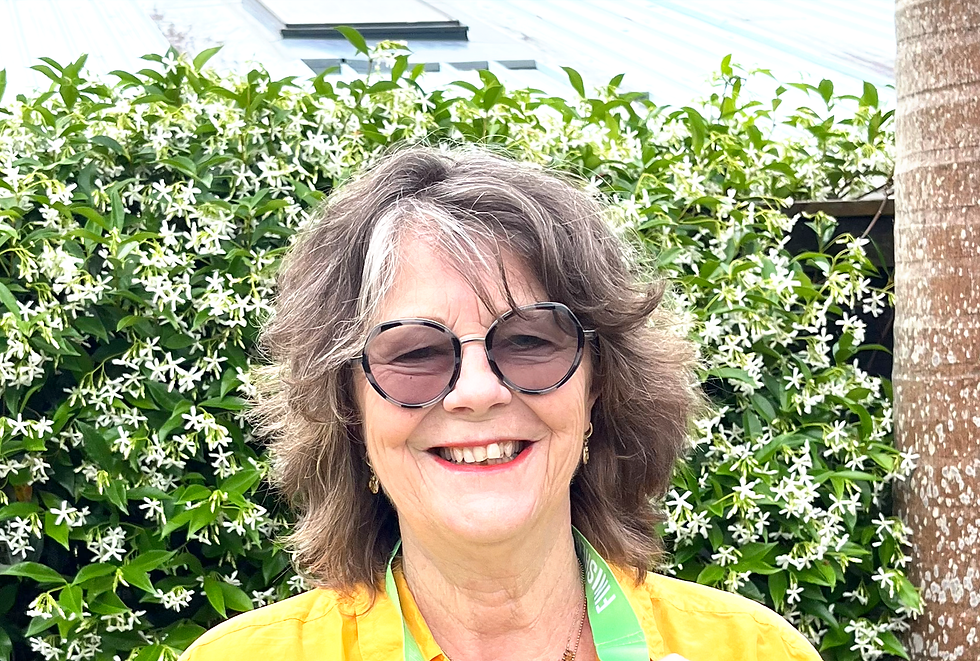Yvonne van Dongen, October 30th 2024

This article first appeared on Plain Sight on October 30th 2024 and is published here with permission from the author.
Just over 20 years ago the difference of one vote ensured New Zealand would pass the most liberal prostitution legislation in the world, the Prostitution Reform Act (PRA).
Now known as the New Zealand model, decriminalisation remains largely an international outlier, emulated only by Belgium and a few Australian states. Yet the country is often touted as a shining example of how well decriminalisation works by numerous academics, sex trade lobbyists, NGOs and mainstream media.

However an independent report examining the reported benefits of the decriminalisation of prostitution in New Zealand found not one claim stands up to scrutiny. The 2023 paper "What REALLY Happened in New Zealand When Prostitution was Decriminalised?” was written by American data scientist J. Smith.
Smith found that pro-sex trade lobbyists have had an outsize influence in New Zealand since the PRA was passed in 2003. The New Zealand Prostitutes’ Collective (NZPC), a group of self-identified ‘sex workers’ instrumental in the implementation of the PRA, have consistently lobbied against further regulation. The NZPC has been government funded since 1988, a year after its inception. Government funding now totals over $1m annually.
But Smith’s research refutes all claims by local pro-sex trade lobbyists. The benefits of decriminalisation touted by these lobbyists include claims that the sex industry has not expanded, health and safety have improved, as has the prosecution and conviction of crimes against women. Also vulnerable children who are victims of sexual exploitation have not been harmed and there is no human trafficking in the industry.
Smith’s report found flaws with the pro-trade research process. For instance they skewed calculations on matters as basic as the number of women working in the trade and the number of commercial sex establishments.
Pro-trade lobbyists claimed there was no increase in prostitution after decriminalisation. Putting aside why this is regarded as a benefit (surely if sex work is work you would want the trade to expand), Smith queried how the numbers were calculated. Major regions were omitted and reports relied on data from a private group that lobbied for full decriminalisation rather than official police estimates.
Smith calculated that a more accurate assessment showed a 38.9 percent increase in people in prostitution in the first year post legislation. The number of brothel licences granted also increased from 189 before the legislation to 326 a year later, not including the number of unlicensed brothels. Smith said this is significant given the laxity of licence checks as reported by brothel owners and claims that the unregulated sector was expanding rapidly.
Brothels employing fewer than five people do not require licences.
A planned 2018 re-evaluation of the industry never occurred and a 2020 Official Information Act request revealed that the Justice ministry has no intention of reevaluating the PRA.
In 2019 the NZPC claimed they served over 7416 sex workers in the first half of the year although in a 2024 interview in North & South, NZPC head Dame Catherine Healey estimated there were about 4000 women in the trade.
Then there is street prostitution which had been decreasing for five years pre-decriminalisation. However six months pre the PRA street soliciting offences doubled suggesting the increase was in anticipation of the PRA.
In another report, the NZPC also downgraded the number of advertisements for commercial sex since in their view an apparent increase in numbers included women they did not know, inactive contact numbers or rates deemed too high to be realistic. On another occasion they argued that the ads were from Asian newspapers and a new website.
Smith’s examination of pro-trade sources found they reframed sex as a basic right all men are entitled to and where the privacy of men is valued above all. She said this hindered investigations into child abuse. The NZPC also discouraged arresting abusers of child victims of commercial sex exploitation, suggesting it would not deter abuse.
New Zealand police reported that as a result of legislative changes, they had less contact with the sex industry and there is no systemic intelligence gathering and collation. The Prostitution Law Revieew Committee (PLRC) downplayed reports of child sexual exploitation, blaming media exaggeration, despite the US State department naming New Zealand as a “source country for underage girls subjected to internal sex trafficking.” The department has also expressed concern about New Zealand’s failure to prosecute a single case of sex trafficking
Smith also highlighted the failure to define offences under the PRA as serious sex crimes, a factor that has obstructed information gathering on the law. She concluded that treating prostitution as a job like any other has fostered tolerance of child sexual exploitaiton through prostitution.
This child abuse disproportionately affected children of colour. Maori and Pacific Island children entered the sex trade before the age of 18 at double the rate of New Zealand European children. Smith found that the New Zealand sex trade, like many countries with legalised prostitution, relied disprotpotionately on migrants and people of colour to fill demand.
Violence remains a feature of prostitution. Pro-trade lobbyists blame stigma, even though decriminalisation was meant to diminish this. A PRLC survey asked about services clients might request such as “golden showers” and “fisting”. Smith asks how these practices adhere to occupational safety standards? In addition, health inspections rarely took place.
Smith concluded that the hypocrisy of academics, health organisations and the media, showed the total ideological capture of these institutions. For instance, following the murder of women in prostitution, the NZPC was quick to defend the PRA and claim that decriminalised sex work was working.
Smith’s paper is not the only report to criticise the NZPC’s influence. In 2018 renowned feminist scholar and activist Janice Raymnond outlined the influence of the NZPC in an article accusing the organisation of gatekeeping.
Raymond explained that the NZPC was not only “influential in lobbying for the law that decriminalised the sex industry, but also drafted the original bill.” Their association with brothel owners and the government funding led her to question the monopoly the NZPC has on prostitution policy and research in New Zealand.
However debate is largely dominated by pro-sex trade lobbyists. Those opposed may be referred to as SWERFS (Sex Work Exclusionary Radical Feminists) in an echo of the term used to deride women advocating for biological reality labelled TERFS (Trans Exclusionary Radical Feminists).
An Australian professor who researched the sex trade in Australia and New Zealand was deplatformed when she spoke out against decriminalisation. In New Zealand, it is difficult to get alternative views on the sex trade into the media. Even when sex trade survivors band together to lobby for reform, such as the group Wahine Toa Rising, they struggle to get their critiques of the industry into the public arena.
Critics point out that the livelihood of pro-sex trade lobbyists relies on the continuation of the sex trade. The Nordic model penalises the client and assists women to leave the industry. If the Nordic Model was implemented and funding shifted to exit services instead of the current harm reduction services, they risk losing their jobs. The NZPC, for example, is flush with over $1m in government funding.
Decriminalisation is also advocated by the United Nations, the World Health Organisation and Amnesty International.
Critics suggest some of these organisations may have conflicted motives. UN peacekeepers have been accused of committing large-scale sexual abuse, frequently of children while on duty. The Associated Press found that in the 12 years before 2017 when accusations surfaced there had been almost 2000 allegations of sexual abuse and exploitation by peacekeepers and other UN personnel around the world. A 1996 UN study found that half of peacekeeping missions are correlated with a “rapid rise in child prostitution” in respective countries.
In 2023 the WHO Office of Internal Oversight Services, or IOS, reported it had investigated 287 allegations of sexual misconduct in all WHO regions in the last 12 months.
Commentators and organisations such as Human Rights Watch (HRW) suggest that the problem now extends beyond the “actions of a few”, with HRW highlighting that other major supranational organisations involved in these missions have the same problems, including the African Union.
Feminist Janice Raymond has also highlighted the way language is manipulated to minimise violence against women which is referred to by the NZPC as “exploitative working conditions”, “occupational hazards”, “adverse experiences while working” or “malpractices.” She pointed out that in the PLRC report there is no section called violence against women. Sex trafficking is reframed as “migrant sex work.”
She says since the PRA only just passed in 2003 (by a single vote), consideration should be given to assessing public opinion of the law and its consequences and to revisiting a parliamentary vote.


Comentários